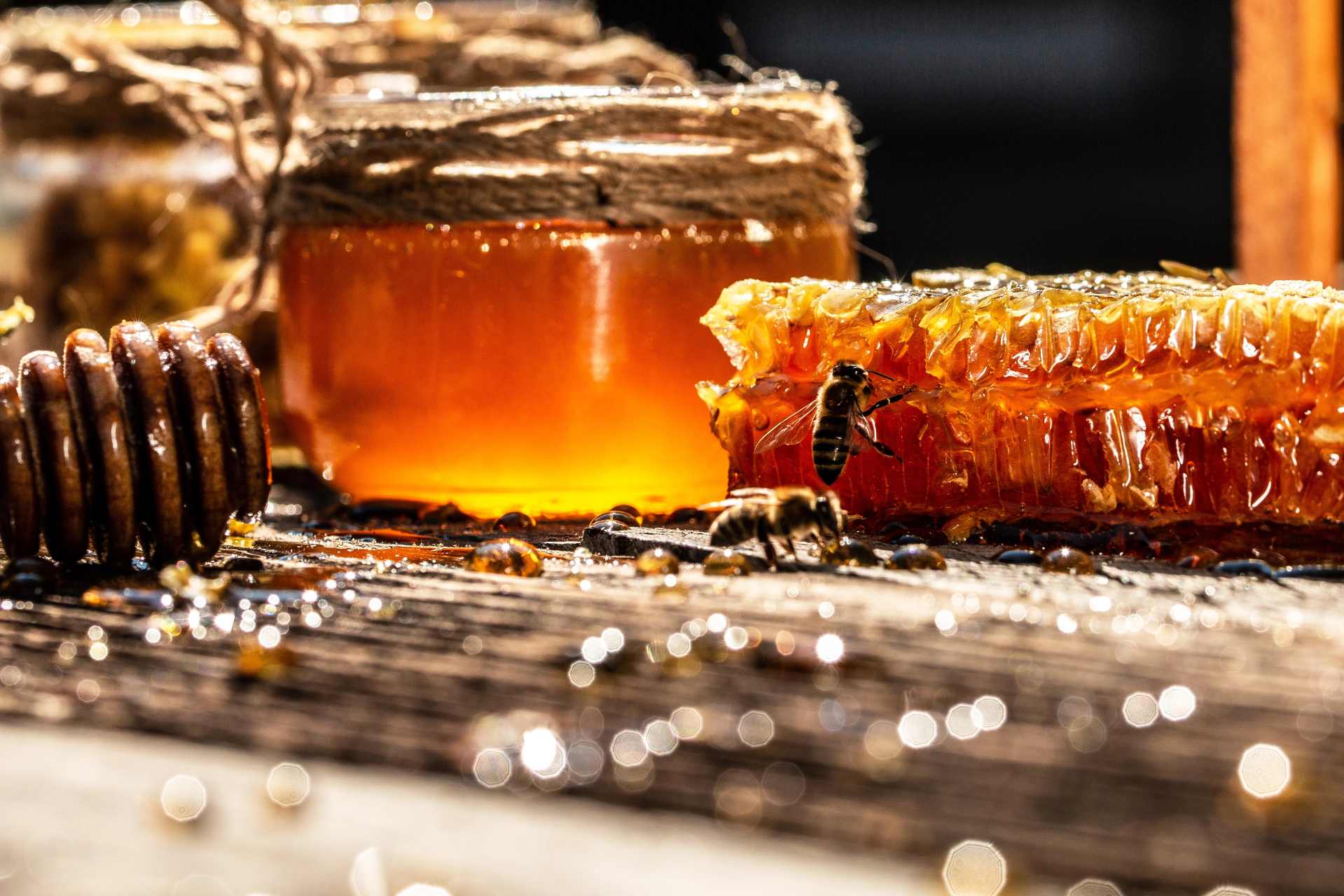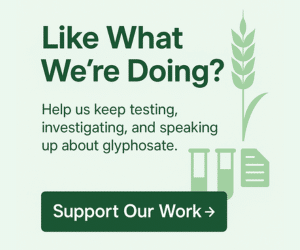It’s been said before: bees don’t read spray notices.
They forage freely, unaware of pesticide buffer zones or property lines. That’s why when trace levels of glyphosate show up in honey, it’s not necessarily a reflection of bad practice by the beekeeper—but of how deeply this herbicide has infiltrated our environment.
But here’s the twist.
We recently tested seven popular honey products as part of our second honey testing initiative. Five out of the seven tested positive for measurable levels of glyphosate. While none of the samples exceeded New Zealand’s Maximum Residue Limit (MRL) of 0.1 mg/kg for honey, several tested just above the detection threshold — confirming that even trace amounts of glyphosate are making their way into products marketed for health and wellness.
The concern isn’t about legal compliance, but about the presence of a chemical linked to environmental harm and potential health risks.
Then Came the Responses From Producers
Honey producers have responded to our invitation for comment. And while some responses were firm, they highlighted something crucial: even within the industry, there’s growing recognition that glyphosate is both pervasive and problematic.
They explained that bees collect nectar and pollen from wide-ranging areas, including places that may have been recently sprayed. The residues found in honey, they argue, are incidental — not the result of bad practice, but of an environment saturated with herbicides. Notably, they voiced support for stronger controls on glyphosate use to reduce this risk, while also expressing concern about the cost and complexity of increased testing.
Their perspective reflects a broader challenge in food production: how to preserve product integrity when environmental contamination has become routine.
And that’s the heart of the issue. Despite public defenses of glyphosate, even honey producers are acknowledging the problem: glyphosate is showing up in bee products not because of what beekeepers are doing — but because of what’s being done to the land around them.
And this is before MPI’s proposal to raise allowable glyphosate limits by 9900% on key food crops like wheat and oats — a move that could indirectly increase residues in products like honey.
Wellness Claims Meet a Chemical Reality
Many honey products are sold with a subtle (or not so subtle) nod to health:
- “Supports immunity” — but glyphosate is known to alter immune system pathways and disrupt cytokine balance.
- “Gut-friendly” — yet glyphosate has been shown to disturb the gut microbiome in both animals and humans.
- “Natural healing” — but we’re finding traces of a synthetic chemical classified as a probable human carcinogen by the International Agency for Research on Cancer (IARC).
So the same product that boasts wellness benefits might also deliver a microdose of a chemical linked to endocrine disruption, microbial imbalance, and long-term immune dysfunction. And yet, there’s no legal requirement to disclose that residue on the label.
A Dose-by-Dose Dilemma
Every trace level matters more than we’ve been led to believe.
It’s not just what’s in one spoon of honey. It’s what’s in the toast. The cereal. The flour. The oats. The bread. The crackers. The fruit. The tea.
It’s the total daily burden—glyphosate exposure accumulating in microdoses, day after day.
And still, the system asks us to accept that “it’s below the limit” is good enough. But what if that limit—originally calculated in the 1990s—doesn’t reflect modern science on low-dose, long-term exposure?
Even Industry Knows
Producers aren’t dismissing the issue. They’re acknowledging it—even if they don’t fully support more testing. That alone tells us something.
If the people closest to the hives are raising concerns about environmental exposure… why aren’t regulators listening?
If beekeepers are forced to navigate a chemical-saturated landscape… why are we considering increasing allowable glyphosate residues instead of reducing them?
If health claims are splashed across product labels… should the presence of a probable carcinogen—not even listed—be allowed to quietly sit beside them?
When ‘Safe’ Isn’t the Same as Harmless
We’re not trying to ruin honey for anyone. We’re trying to protect it.
Because this isn’t just about bees (although it should be). It’s about us.
Without bees, there is no food chain. And if we keep dosing the ecosystem with chemicals like glyphosate, the health claims on our honey jars may soon be the least of our concerns.
If we don’t reduce glyphosate use in our environment, we’ll be left with a bitter truth:
Even nature’s sweetest gifts are no longer untouched.
Clarifying Our Intent
It may surprise some to hear that honey producers perceive us as a threat. But our aim has never been to undermine the industry — in fact, we’re fighting for the same thing many of them want: less glyphosate in the environment. Our testing isn’t about attacking beekeepers. It’s about challenging a regulatory system that’s considering raising allowable limits of this chemical, not lowering them. If anything, we’re drawing attention to a bigger problem that affects us all — producers and consumers alike.
Resources & References
We’re not asking honey producers to panic — we’re asking them to pay attention. The resources below highlight why even the smallest traces of glyphosate in honey are worth attention, what current standards cover (and overlook), and how independent testing is stepping in where official monitoring falls short.
Our Previous Testing Series
Glyphosate in NZ Honey: First Test Results
Our initial test series revealed detectable glyphosate in several store-bought jars, raising early questions about industry transparency and product purity.
Weet-Bix Glyphosate Test Results
What began with breakfast sparked a broader conversation — if we’re finding residues in cereal, how deep does the issue go across the food supply?
Glyphosate in Breakfast Foods
Seven cereals, one common contaminant. This test series helped confirm what many suspected: glyphosate is quietly present in everyday foods.
UMF™ Honey Association – Why UMF™ Certification of Mānuka Honey Is Crucial for Consumer Health
Explains how UMF™ certification ensures honey quality and authenticity. However, glyphosate testing is not currently required — leaving a blind spot in purity standards.
Codex Alimentarius – Honey Standard (CXS 12-1981)
The international benchmark for honey composition and safety, adopted by countries like New Zealand. Notably, glyphosate isn’t specifically addressed — even in revised editions.
MPI – Glyphosate in Food (Food Safety NZ)
Outlines New Zealand’s approach to glyphosate residue monitoring. Honey is not routinely tested — despite widespread environmental exposure and consumer concern.
Analytica Laboratories – Glyphosate Residues in Honey (NZ Beekeeper, July 2019)
A technical breakdown of how glyphosate ends up in honey, and how it’s tested. Highlights the disconnect between detection thresholds and official MRLs.
Independent Review (Rampazzo et al., 2023) – Glyphosate, Glufosinate & AMPA in Hive Products
An international look at glyphosate contamination in honey, pollen, beeswax, and beyond. Reveals variability across countries, labs, and methods.
International Agency for Research on Cancer (IARC) – Glyphosate Monograph
The 2015 classification of glyphosate as “probably carcinogenic to humans (Group 2A)” became a global turning point — one that still fuels debate, testing, and concern.
Image Source & Attribution
We’re grateful to the talented photographers and designers whose work enhances our content. The feature image on this page is by kovalnadiya.ukr.net.




